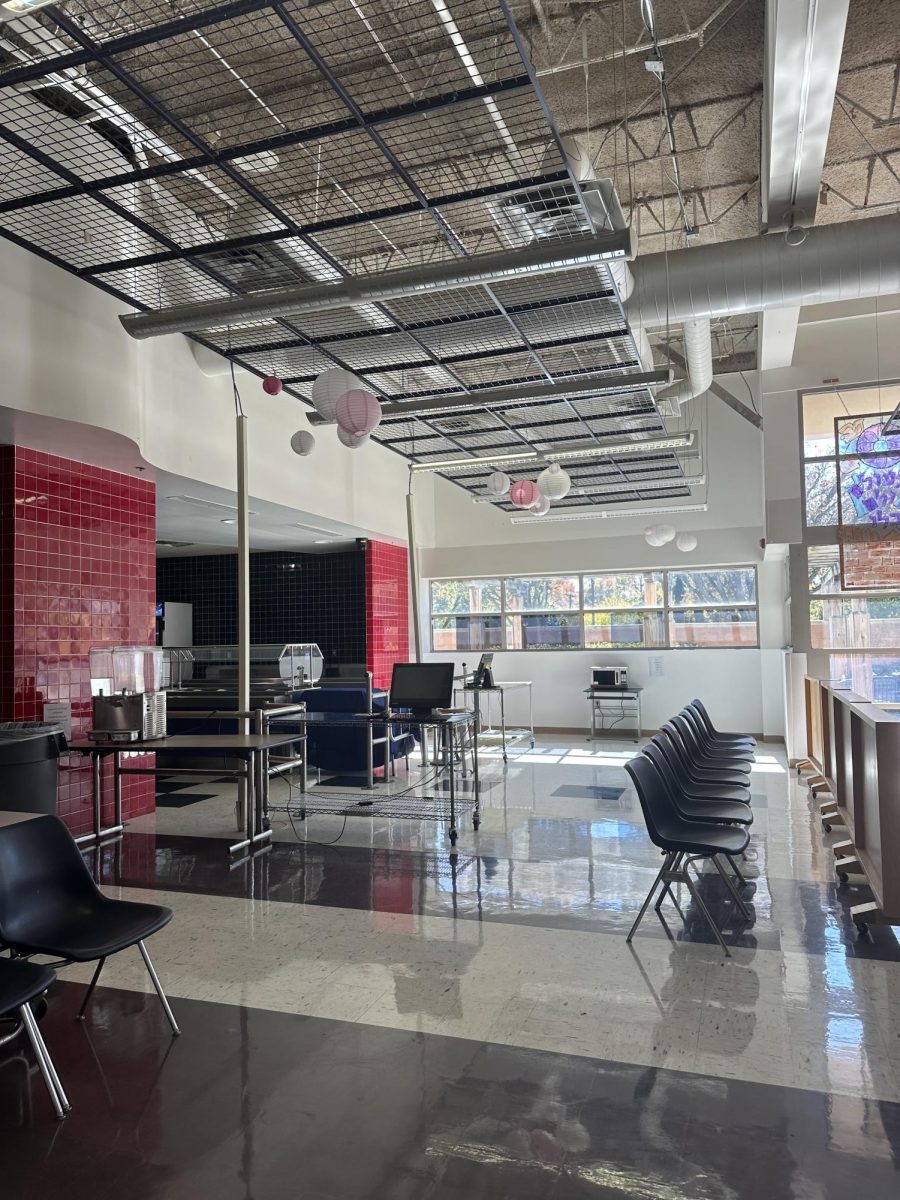This year, upon entering the CESJDS dining hall, students are met with a host of new opportunities. Some changes include different lunch prices, a microwave to warm up food and more in-house food options.
While all of these changes were made independently from one another, the changes to the dining hall were all made with the broader goal of enhancing student engagement and accessibility in the community, according to Head of the Upper School Campus and High School Principal Lisa Vardi.
“I strongly believe that space is key to boosting more communal life,” Vardi said. “The heart of learning is communal interaction, and the space [where] you’re learning [takes place] boosts conversation and education. So, we want to encourage that social interaction in our space.”
One change this year is formally renaming the “cafeteria” to “dining hall.” According to Vardi, this is in part due to the connotation of the word “cafeteria” compared to the “dining hall.”
“When you talk about a dining hall versus a cafeteria– a cafeteria, in my mind, is just a line you go through and you come out with food,” Vardi said. “But a dining hall is a communal space where you feel warmth, community and conversations flow.”
Another change in the dining hall is the pricing system. Historically, JDS hot lunch has been $10.50, regardless of what was being purchased. This year, however, JDS implemented a tiered pricing system for hot lunch.
The new lunch prices with the tiered system are $6.50, $8.50 or $10.50. While some lunch meals, a grilled cheese sandwich, for example, would be $6.50, a meal of brisket and vegetables would be $10.50.
According to Director of Food Services Mark Glauser, this new tiered menu pricing was driven by feedback from parents and the JDS community overall, as well as the desire to increase the accessibility of JDS families to buy hot lunches.
“We changed the prices to accommodate [to families] so that we would have more students participating because a lot of families were saying it was too expensive,” Glauser said. “Listen, if you have three kids going to JDS and you have to pay for every kid to have lunch, that’s expensive. So, the lower price helps with that.”
The lunch prices can be found on the JDS website and on the board in the dining hall.
In contrast to previous years, students can now only get second helpings if they pay extra, as the new pricing is based on the price of the portion size of protein.
“We’ve seen a slight increase [in the number of lunches bought],” Glauser said. “I think our problem is that we haven’t done a very good job marketing-wise, and we still have to get the word out that the prices have been lowered.”
Another development in the dining hall is the new microwave outside of the kitchen area. Last year’s freshman class presidents, Lyla Sacks and Noah Sacks, executed this idea that was brought to them by freshmen students last year.
After discussions with freshmen dean and biology teacher Melissa Andrew and Vardi, the Sacks were informed the microwave would be installed this year.
“We were very happy [that we got the microwave]” Noah said. “It’s very hard to do, because there are limitations, and being able to have that success and do something that people in the grade did want felt very, very good.”
While getting this microwave was a win for Noah, his grade and the rest of the students, there were a few obstacles along the way. One problem with the microwave was maintaining the kashrut protocol that the school follows.
According to Glauser, the JDS kitchen is supervised by the Vaad Harabanim of Greater Washington. The Vaad Harabanim of Greater Washington only works in the kitchen area, so the problem was that the microwave was outside of the kitchen area, making the microwave not under the kashrut supervision.
As outlined in an email from Vardi to JDS high school students from Sept. 19, the rules for the microwave are that all foods placed into it must be dairy or pareve, students must remain in the microwave area while heating their food and students must clean up after themselves if they make any sort of mess in or around the microwave.
“We want to benefit the students; that’s what we’re always trying to do,” Vardi said. “It just takes a lot longer behind the scenes than people realize, because there are always so many questions that come up [when adding something new to the dining hall].”
According to Vardi, she hopes students are mindful of the rules put in place regarding kashrut when using the microwave. However, Glauser said that anything that happens outside of the area where the food is served and paid for is no longer supervised by the dining hall staff and is up to the student’s discretion.
Apart from changes to the food and equipment in the dining hall, there is also a new mural on the wall designed and created by last year’s Art and Exploration Zman Kodesh. The mural features the Jerusalem wall, an Israeli flag and a roaring lion. It takes over the wall opposite the kitchen in the dining hall.
The new mural replaced the over twenty-year-old photograph of Jerusalem in hopes that the new mural will “infuse some JDS pride, some color and to leave a legacy” in the dining hall, according to Vardi.
Additionally, JDS is now opening a “marketplace.” Glauser and the kitchen staff are now making their own Challah that is given out to students and families who order it for Shabbat, rather than placing an order from elsewhere, as was previously done. The challah is only the first step in the new initiative for the JDS’ kitchen to make packaged Shabbat meals for order ready to be cooked on a stove for families on Friday nights.
This new initiative will hopefully launch after the high holidays, according to Glauser, and will feature different menus like salmon, chicken kebabs, roasted chicken brisket, vegetarian chickpea stew and more.
The meals are being made in the kitchen and can be picked up at the upper school by the students of the families that ordered or brought to the carpool line for lower school families.
If we can provide a great product at a great cost, in-house, I think that’s great for our branding and it’s a service [to the community],” Glauser said. “We’re here to provide a service for the families. A lot of people are looking for kosher items at a reasonable price, and, logistically, we can do everything here.”
According to Glauser, the changes in the dining hall so far this year have been helpful and successful to the kitchen and kitchen staff.
“I think we’re running a lot better [this year],” Glauser said. “Our waste is down, not that we ever had a lot of waste, we cross utilize a lot more than we used to … and there’s more challah sales. Everything’s consistent. And that’s one of the biggest things in food service, whether you go to restaurants or anywhere else, you want consistency.”















